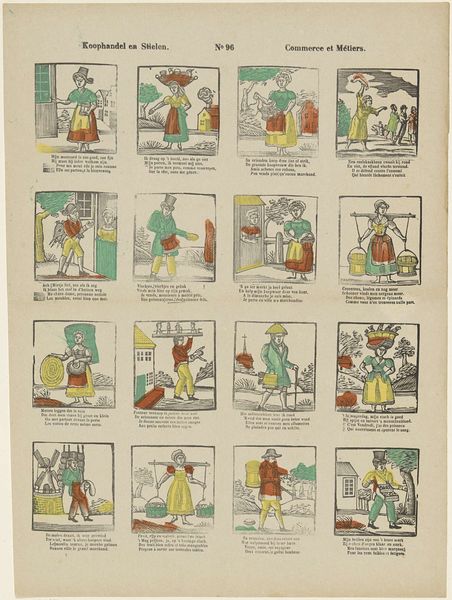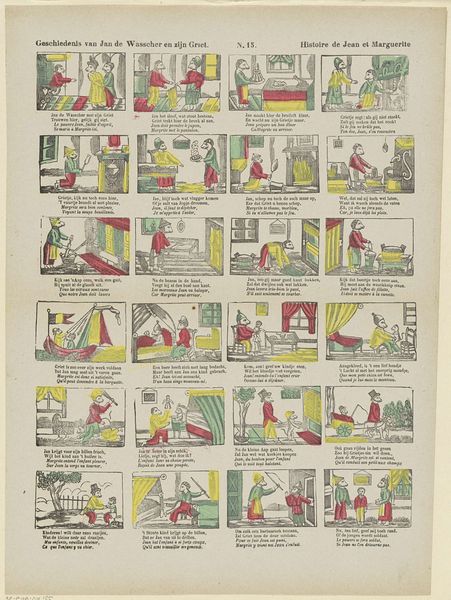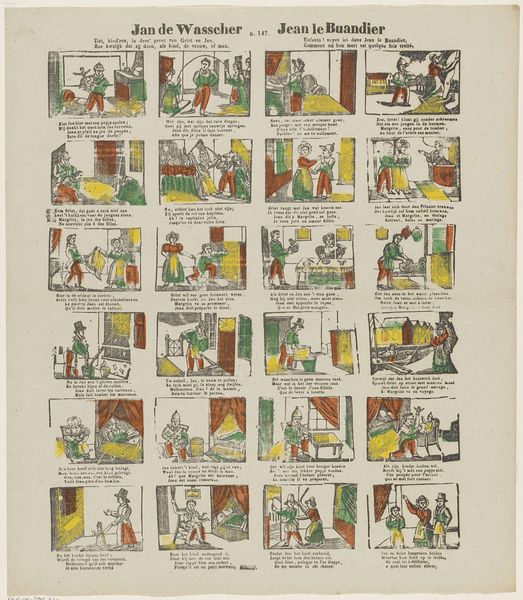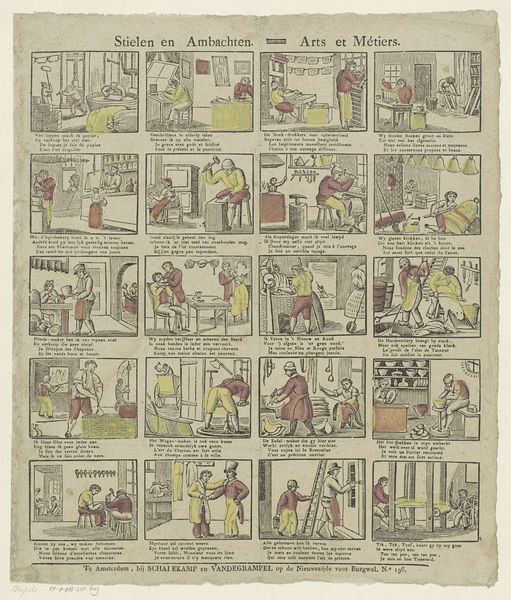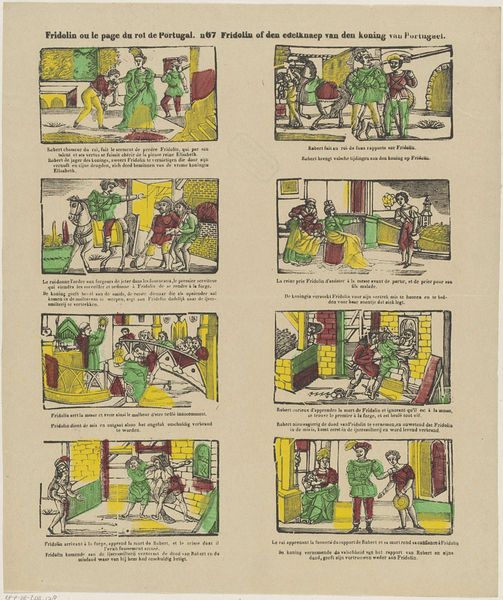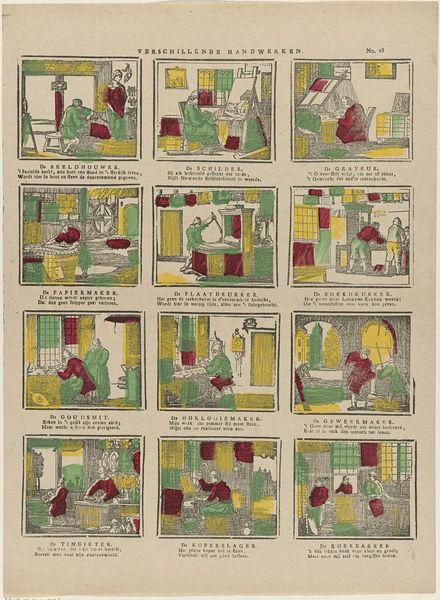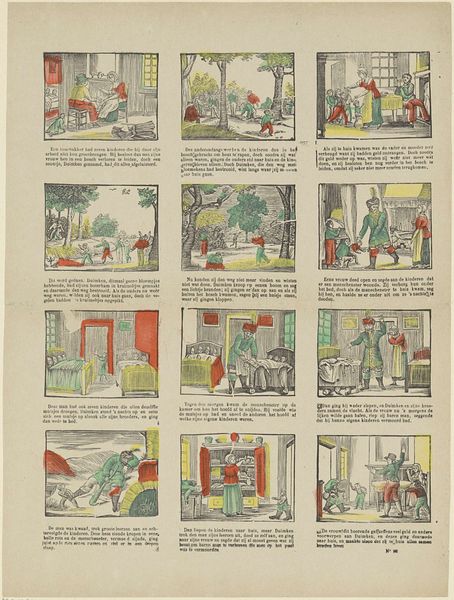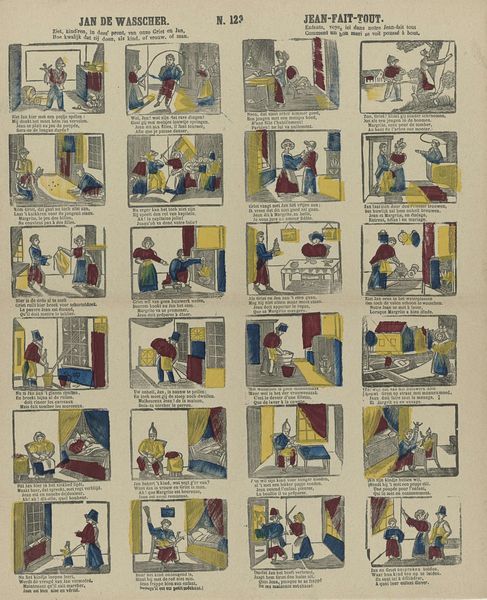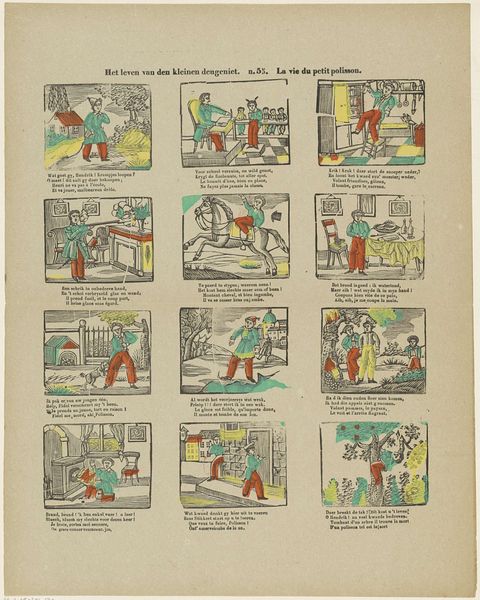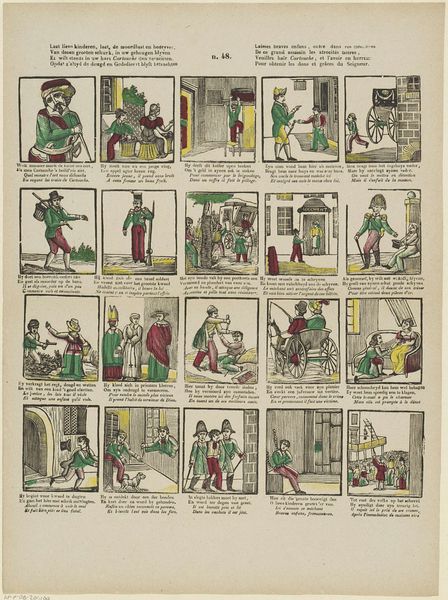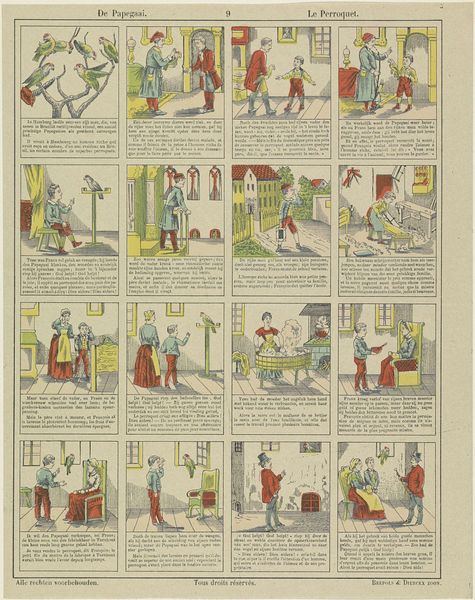
graphic-art, print, pen, engraving
#
graphic-art
#
narrative-art
#
comic strip
# print
#
comic
#
pen work
#
pen
#
genre-painting
#
engraving
Dimensions: height 427 mm, width 306 mm
Copyright: Rijks Museum: Open Domain
Editor: Here we have “Ambachten en beroepen” or "Trades and Professions", a print by Franciscus Antonius Beersmans, dating from between 1866 and 1902. It's really interesting how this feels like a comic strip, showing all these different scenes of labor. What can you tell me about it? Curator: Looking at Beersmans’ print through a materialist lens, the immediate question that comes to mind is production. How were these images made, and what were they intended to communicate about work itself? Editor: So, not just what the jobs were, but how they were seen? Curator: Precisely. The printmaking process – likely an engraving, judging from the fine lines – suggests a level of craft and skill, an artisan producing images of artisans. The slight stylization adds to that impression. It implies an intended audience; this wasn't cheap mass production. Editor: Who might have been buying something like this? Curator: Perhaps it was targeting an emerging middle class, interested in documenting and classifying various occupations. Think of it as a kind of visual catalog reflecting a growing awareness of labor roles. It highlights how different hands contribute to society, while also establishing those differences within the economic strata of the period. We see materials and production both *within* and *behind* the print itself. What did you initially notice about the choices of color? Editor: I guess the limited palette—just touches of red and green and yellow—keeps it from feeling too realistic. It almost highlights certain key aspects, doesn't it? Now that I’m thinking about it, I wonder who did that coloring… Curator: Exactly! These hand-applied colors remind us of the labour that went into this product's production as well as representing various materials depicted. Something we often overlook. Editor: That really shifts how I see it. I was looking at it as a depiction of trades, but it’s also a product of those trades and reflects class values and economic practices. Curator: Absolutely. By examining the means of production and circulation, we gain a far more nuanced understanding of both the artwork and the society that produced it.
Comments
No comments
Be the first to comment and join the conversation on the ultimate creative platform.
